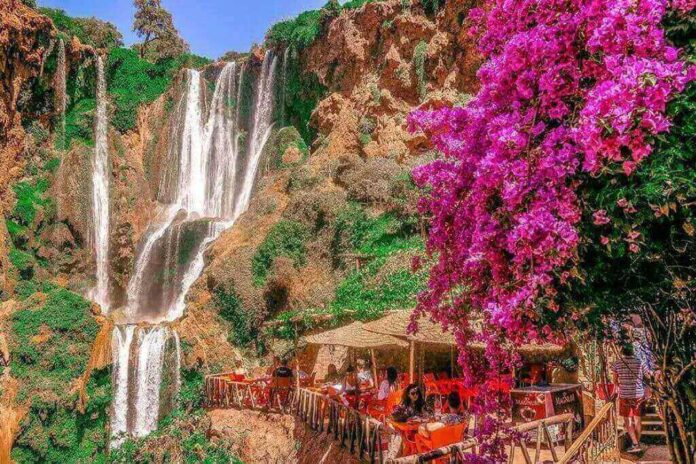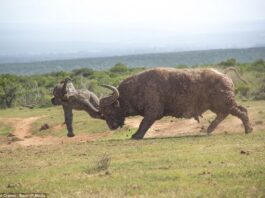Africa has some of the world’s most stunning waterfalls, from the Tugela Falls, which some authorities claim to be the tallest, to the majestic Victoria Falls, which has the world’s greatest sheet of flowing water. Here are some of the best waterfalls in Africa that you should add to your bucket list.
1. Victoria Falls, Zambia, and Zimbabwe
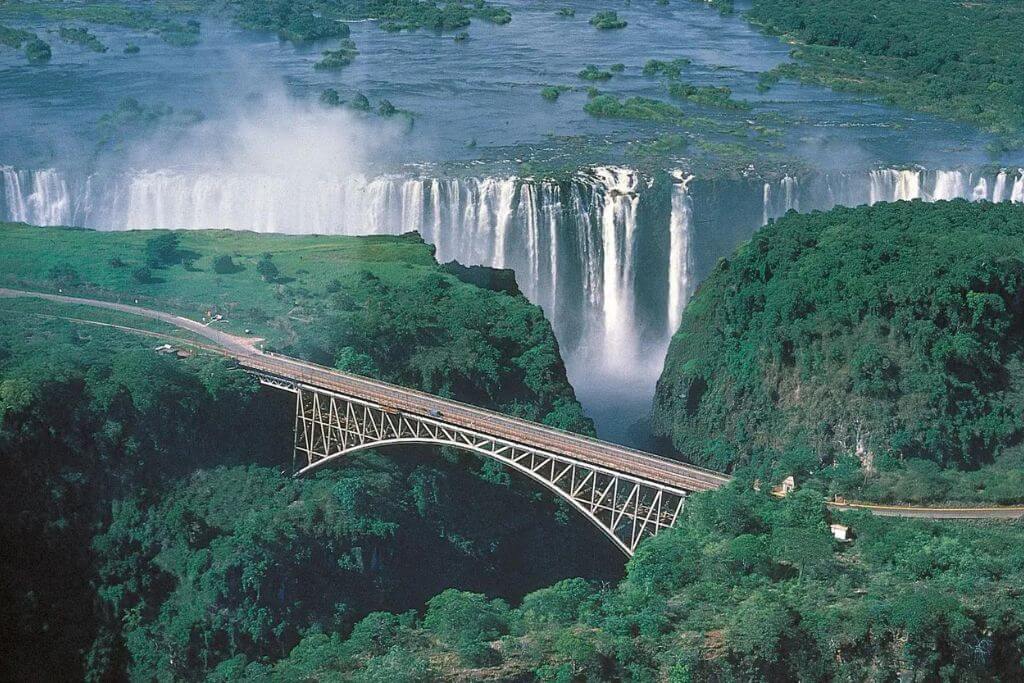
Victoria Falls, the most well-known waterfall in Africa, is situated on the boundary between Zambia and Zimbabwe. The largest waterfall in the world measures 5,604 feet wide and 354 feet tall.
The Zambezi River is known locally as Mosi-oa-Tunya because the spray produced by its rushing waters can be seen from 30 miles away (The Smoke That Thunders). More than 500 million liters of water pour over the lip of Victoria Falls every minute during the flood season, which lasts from February to May.
At vantage points in Victoria Falls National Park on the Zimbabwean side or Mosi-oa-Tunya National Park on the Zambian side, you may take in this magnificent scene. Two-thirds of the falls are visible from Zimbabwe, and Zambia gives the once-in-a-lifetime opportunity to swim in Devil’s Pool, a natural pool that is perched on the edge of the falls.
2. Lumangwe Falls, Zambia
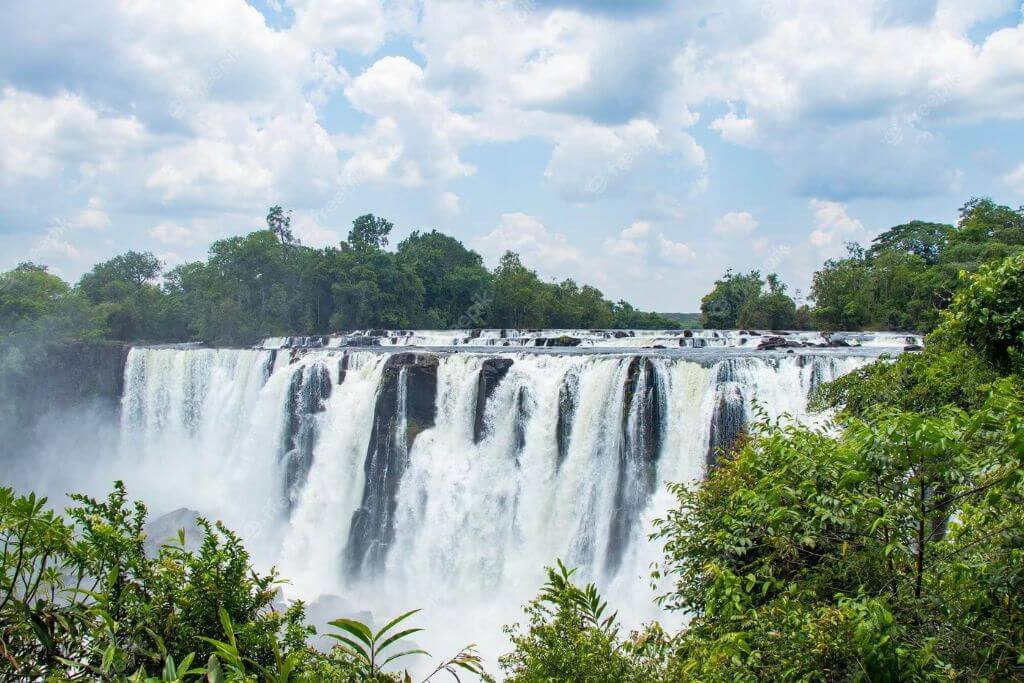
Another traditional block-type waterfall, Lumangwe Falls, is frequently mistaken for Victoria Falls due to its striking resemblance to the renowned falls. At the height of 115 feet and a width of 328 feet, it is the tallest waterfall that can be found entirely in Zambia. A small rainforest is supported on the nearby river banks by the spray created by the Kalungwishi River’s huge veil of falling water, which rises 328 feet into the air.
The waterfall is called after the Great Snake Spirit, Lumangwe, who, according to local lore, is said to extend between the falls at Lumangwe and Kabweluma. He is said to be at his most potent in the months of April and May, at the end of the rainy season.
Take the clearly marked detour from Kawambwa to Mporokoso off the main road in order to access the falls. A campsite is available for individuals who want to camp overnight, and there are overlooks at the peak and on the opposing side.
3. Blue Nile Falls, Ethiopia
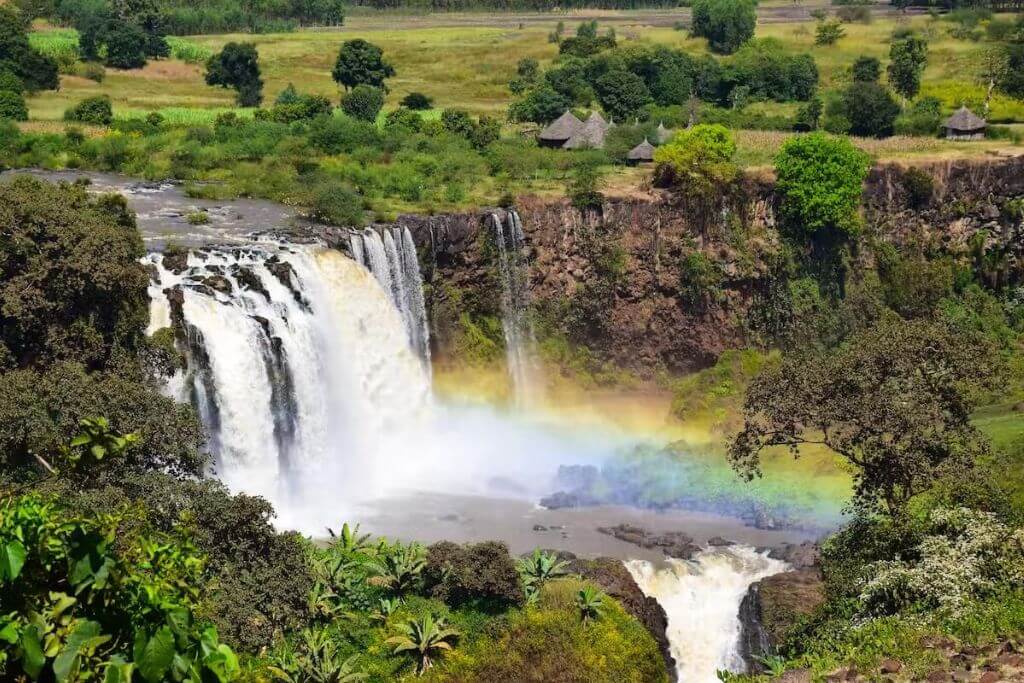
On the Blue Nile River in Ethiopia, about 19 miles downstream from Lake Tana, are the Blue Nile Falls. The waterfall’s Amharic name is derived from misty clouds and glistening rainbows (Tis Abay, or the Great Smoke).
It is around 170 feet tall and features the meeting of four streams, which, when combined, had a breadth of 1,312 feet before the rainy season. Although a hydroelectric station erected in 2003 now uses a large portion of the waterfall’s energy, August and September are still the months when it floods the most dramatically.
The falls are accessible via two distinct hiking trails. The first involves crossing a 17th-century stone bridge—the first in Ethiopia—to reach the main waterfall perspectives on the other side of the river, while the second is taking a brief boat ride to reach the waterfall’s base.
4. Murchison Falls, Uganda
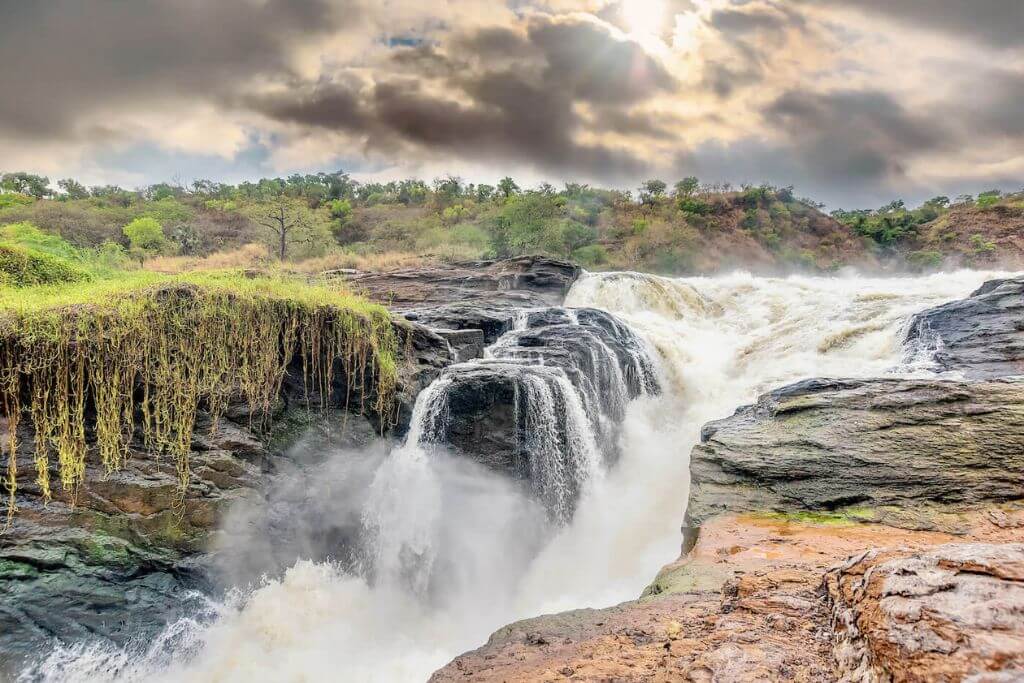
Murchison Falls is located on the Blue Nile and serves as the main attraction of Murchison Falls National Park, one of Uganda’s most well-known places to see wildlife (although the river is known as the Victoria Nile in Uganda). Here, the river pushes through a gorge that is only 23 feet wide before plummeting 141 feet into the Devil’s Cauldron.
The waterfall, which is shrouded in mist and is decorated with a constant rainbow, sees close to 187 million gallons of water rush over its apex every minute. A boat excursion upriver from the settlement of Paraa will take you to the base of the falls and is the finest way to get a close-up view.
While traveling, keep a look out for the park’s diverse wildlife, which includes lions, elephants, buffalo, and the critically endangered Rothschild’s giraffe. Murchison Falls National Park is known for its expertise in shoebill storks.
5. Tugela Falls, South Africa
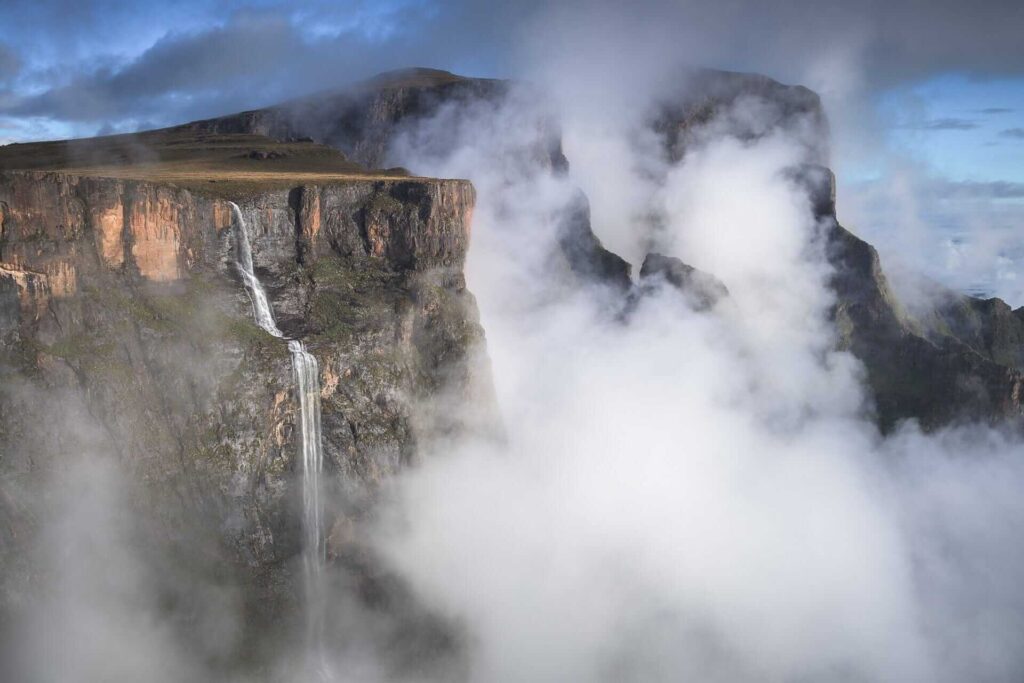
The second-highest waterfall in the world is South Africa’s Tugela Falls, which is made up of a succession of five free-leaping, seasonal cascades. Based on claimed differences in the measurements of both waterfalls, some sources assert that it may even surpass Venezuela’s Angel Falls as the tallest waterfall in the world.
In either case, it is a breathtaking sight to see it plunge in a cloud of foam from the top of The Amphitheatre escarpment, which is the most identifiable natural feature in the gorgeous Royal Natal National Park in KwaZulu-Natal.
Mont-Aux-Sources, one of the highest peaks in the Drakensberg highlands, is where the Tugela River originates. Choose between a simpler climb via the Tugela Gorge to the foot of the falls or the strenuous Sentinel trail to the top of the escarpment for a closer look.
6. Kalandula Falls, Angola
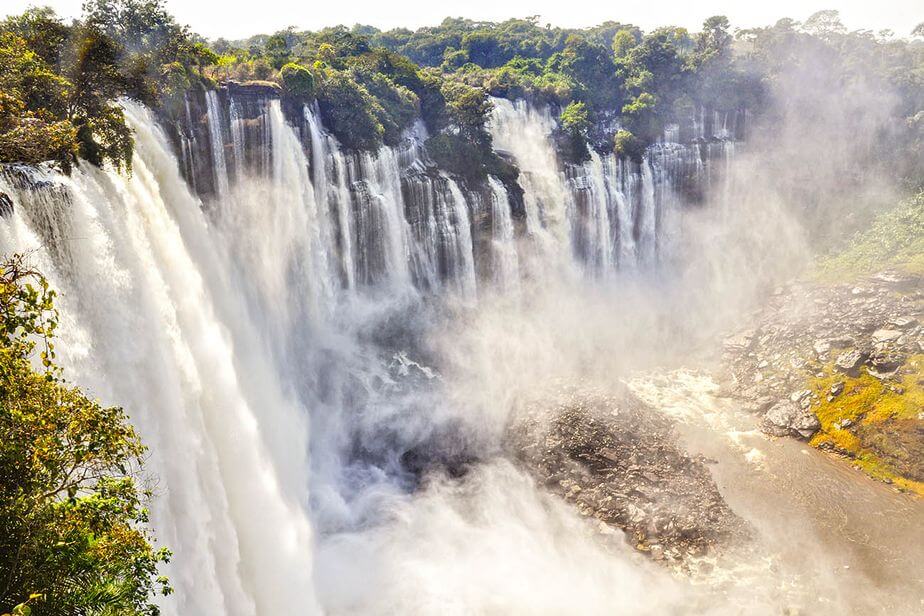
Kalandula Falls, one of Angola’s most well-known natural attractions, was formerly known as the Duke de Bragança Falls before the country gained its independence in 1975. One of the largest waterfalls by volume on the continent, it is located on the Lucala River in Malanje Province and is 344 feet in height and 1,300 feet in breadth.
It is a horseshoe-shaped waterfall on the border of a thick forest, with numerous distinct cataracts and plumes of spray cast up by the plunging water, and it resembles its larger sister, Victoria Falls, in appearance. Visitors are welcome to swim in the pool at the bottom, and it is most impressive near the end of the rainy season (from February to April).
Kalandula Falls is located approximately five hours from Luanda and only ten minutes by cab from Calandula settlement. To catch a glimpse of the falls at dawn and dusk, reserve a room at the Pousada Calendula Hotel at the top of the falls.
7. Ouzoud Falls, Morocco
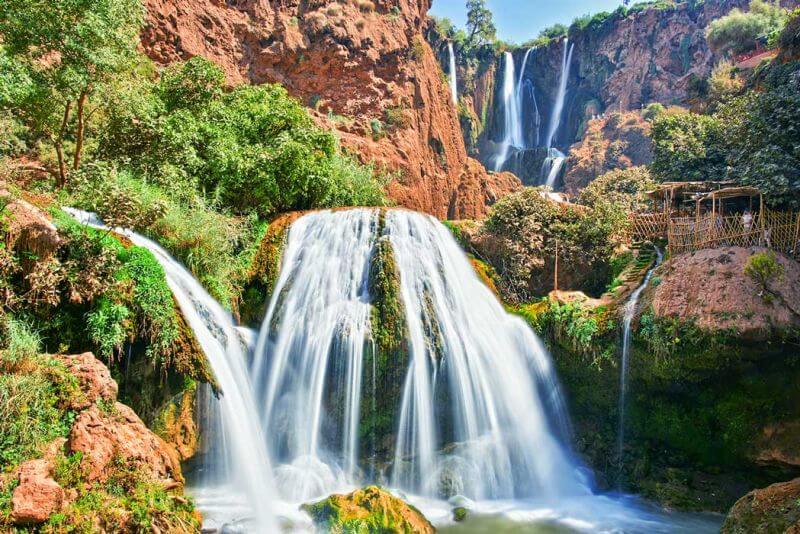
Although first-time visitors to Morocco might not think of the Saharan nation as having an abundance of water, there is numerous green oasis to be found in the north. Ouzoud Falls is a stunning conglomeration of waterfalls that flow into the El-Abid River in the Middle Atlas mountains.
The name of the falls comes from a Berber phrase that refers to “the act of grinding grain” and alludes to the small mills that once stood at the top of the falls, some of which are still in operation today. The infrastructure necessary to support Ouzoud Falls’ popularity as a tourist destination is present.
You can eat at one of the restaurants positioned along the walkway that leads to the waterfalls, take a boat tour to the swimming hole at the base of the falls, or do both. Wild Barbary macaques, a species of monkey that is at risk of extinction, are found in large groups in the olive orchards that surround Ouzoud.
8. Maletsunyane Falls, Lesotho
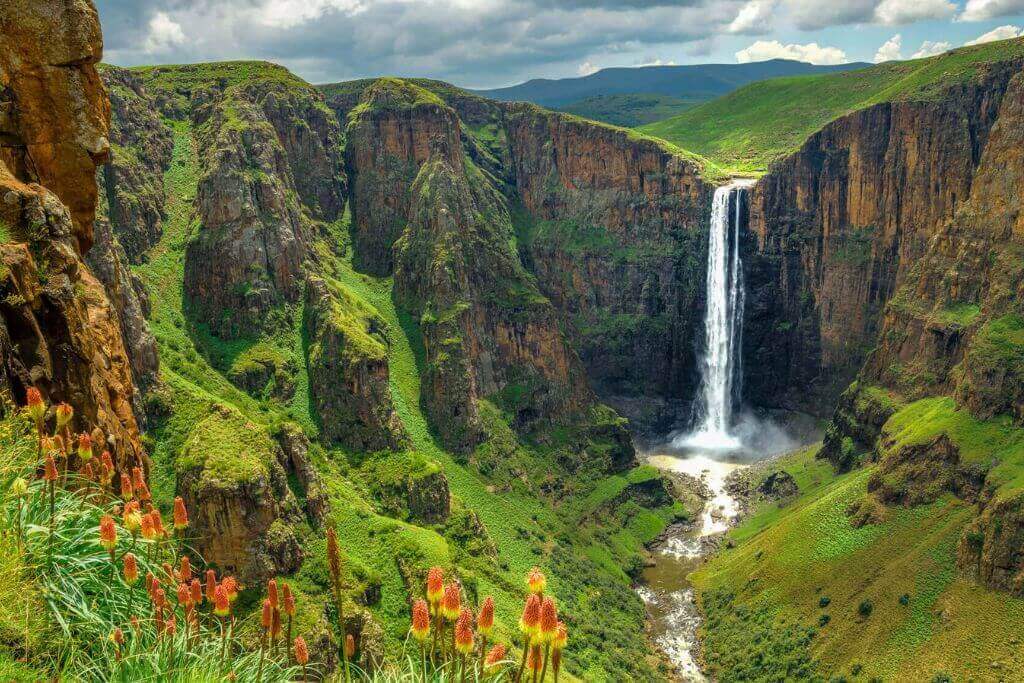
It is challenging to think of a waterfall that is more ideal in terms of pure beauty than Maletsunyane Falls. The Maletsunyane River plunges down a 630-foot precipice at the point of a natural V in the undulating green cliffs above at the waterfall, which is situated close to the town of Semonkong (whose name translates as The Place of Smoke) in Lesotho.
One local mythology holds that the echoes created by the sound of plunging water are actually the wailing of souls who have drowned there. It is one of the highest single-dropping falls in Africa and the subject of many other local myths.
Together with guided treks to the falls and pony rides, Semonkong Lodge also has an abseiling course that drops from the summit and holds the record for the longest single-drop commercial abseil in the world.
9. Wli Falls, Ghana
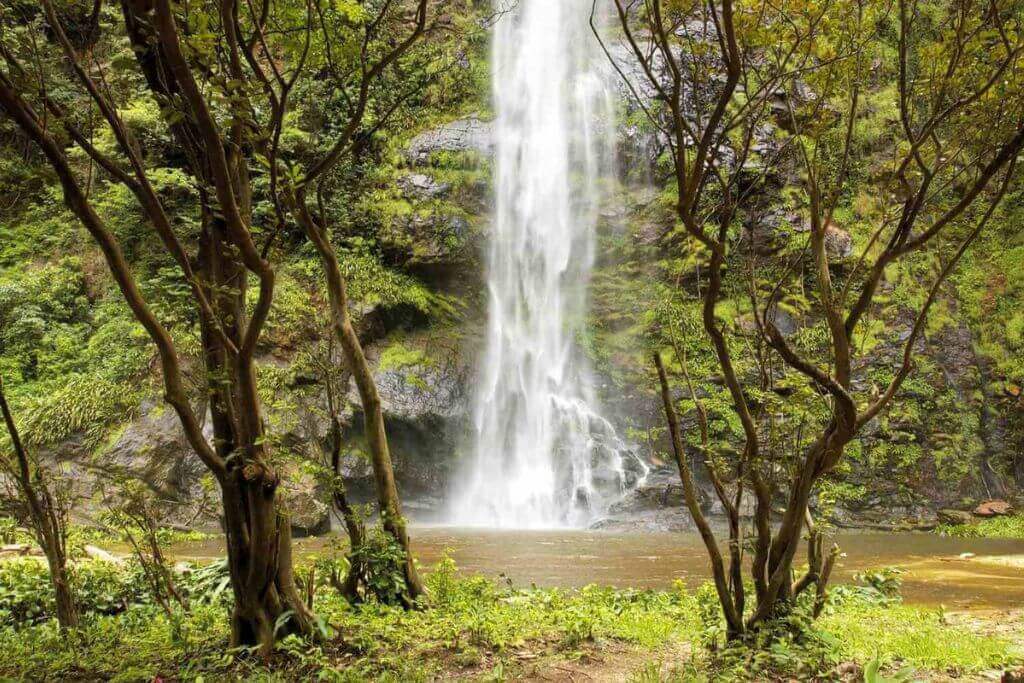
Wli Falls, also known as Agumatsa Waterfall in the local language and translating to “let me to flow,” is the tallest waterfall in Ghana and all of West Africa, standing 262 feet tall. The tropical Agumatsa Wildlife Sanctuary encircles the upper and lower falls, which are situated in the Volta Region.
You can choose to visit the lower falls, which are accessible through a very flat trail that crosses the river multiple times, or you can choose to hike more difficulty to the upper falls, where you’ll have the falls to yourself. The natural reserve is renowned for its colony of wild fruit bats, and both falls have bathing pools at their bases.
More than 200 different species of birds are worth spotting, according to birders. During the peak of the rainy season, the trail to the upper falls may be too slick for visitors to safely navigate. Wli Falls is most stunning from April to October.
10. Kalambo Falls, Zambia, and Tanzania
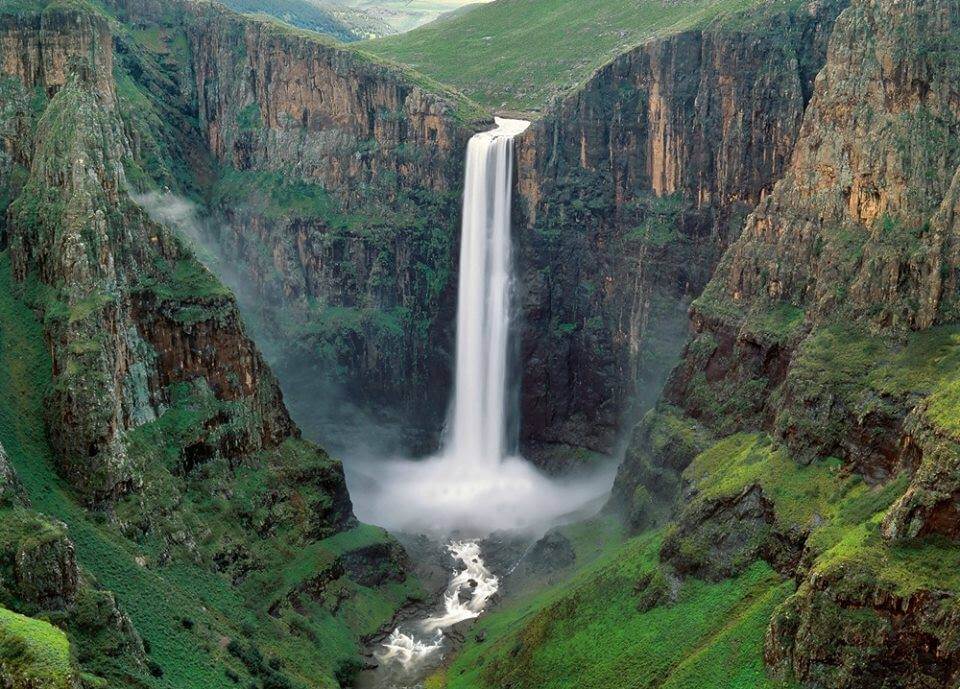
With no less than three falls on this list, Zambia might possibly be Africa’s land of waterfalls. At Mbala on the Kalambo River, in the Northern Province, are the Kalambo Falls. It flows in a single, unbroken torrent down a 725-foot drop into the canyon below and serves as the boundary between Tanzania and Zambia.
Kalambo Falls is a location of the significant archaeological value in addition to being one of Africa’s tallest single-drop waterfalls. The region has been occupied, according to the evidence, for more than 250,000 years, making it one of the longest examples of human settlement in sub-Saharan Africa and earning it a spot on the tentative list of World Heritage Sites maintained by UNESCO. After the falls, the Kalambo River continues on its path toward Lake Tanganyika, the second-largest of the African Great Lakes.
